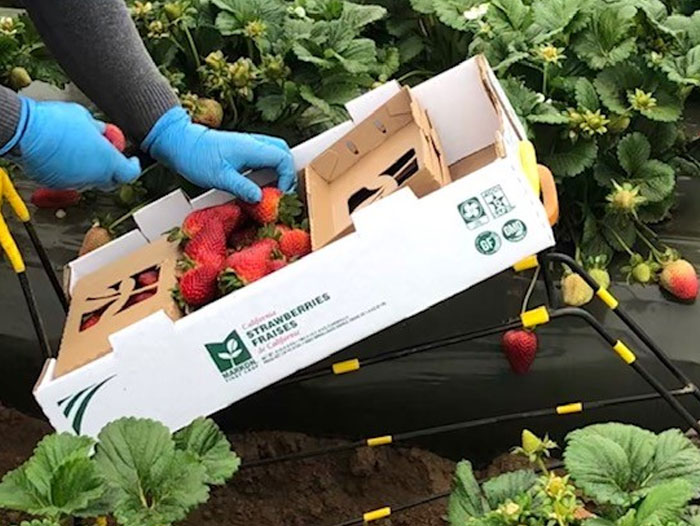California Giant Supports Key Customer Initiative Committed to Reducing Environmental Impacts
April 26, 2019 | 2 min to read

(Watsonville, CA) As people across the country focused on Earth Day earlier this week and how each of us can make a difference, California Giant was working behind the scenes conducting field tests on prototype cardboard clamshells for fresh strawberries.
The cardboard strawberry clamshell called Ready-Cycle introduced by Sambrailo Packaging has received attention by many in the industry and California Giant has conducted their own real-world shipments partnering with a key foodservice customer and Sambrailo. The company spent
several months working closely with Markon Cooperative testing the two-pound clamshell in the field for shipments to their distributor partners. After some adjustments were made to the container to ensure fruit integrity, a recent test shipment showed positive results, with the customer committed to introducing the container during peak berry season in 2019.
As reported earlier this week, Markon Cooperative Inc. is introducing the first of its new line of Ready-Cycle, corrugated, fully-recyclable clamshells, leading the way to reducing the amount of packaging used in the foodservice industry. Beginning with these cardboard strawberry clamshells, this sustainability initiative is their effort to reduce the amount of packaging in its supply chain, while increasing the potential of recyclability.
“We are happy to partner with Markon and Sambrailo Packaging to help make a difference and find new solutions for recyclability and ultimately being sustainable” says Tom Smith, Director of Foodservice at California Giant. “There is definitely a cost issue associated with this package but it’s exciting to see an organization focused on making a difference the first priority” he adds.
California Giant has been an innovator always looking for solutions and new opportunities to better serve their customers and the consumer. This new initiative may not be the final solution that answers the question about how to reduce the plastic headed for landfills, but it helps to have the conversation about what industry can accomplish together and begin the pathway to find solutions for the future. “The decision will ultimately lie with the consumer and test whether or not they are willing to pay for a fully recyclable container when buying their fresh berries in the future” says Smith.
